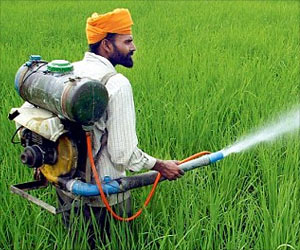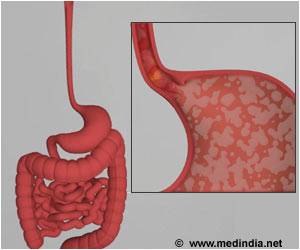Suicide is preventable and calls on communities to fight the stigma that surrounds mental health issues and to take action on the issue.

‘Methods of suicide vary significantly from region to region, and pesticide poisoning is most common in rural regions where the chemicals are readily available.’





Self-poisoning using pesticides is one of the three most common means of suicide worldwide according to the World Health Organisation (WHO), and accounts for 14-20 percent of all suicides. Many of these deaths occur in people who live in rural areas in low- and middle-income countries, making it a major public health problem in these regions. In these areas, a high proportion of the population is involved in farming so pesticides are commonly stored in people's homes. In contrast, in high-income countries, agriculture is practised on a large scale and most of the population do not use or have access to pesticides.
To restrict access to pesticides and prevent these deaths, the pesticides industry advocates for safer storage of pesticides, an approach that has received some support from the WHO and suicide prevention organisations.
A study published in The Lancet is the first randomised trial to study the effectiveness of this measure, testing whether improved storage reduced pesticide self-poisoning in rural communities in Sri Lanka -- where self-poisoning using pesticides is the most common form of self-harm and the fifth leading cause of death.
In the study, 180 rural villages either continued storing pesticides in the usual way (90 villages, including more than 26,000 households and around 11,0000 individuals), or were provided with lockable storage containers that were secured in the ground (90 villages, including more than 27000 households and 114,000 individuals).
Advertisement
In villages using the improved storage, posters were displayed to promote the containers, and presentations were given every six months at farmers' meetings. Other than this, there was no contact between the researchers and the communities for the three years of the study. During this time, suicides and self-poisonings were studied in all people aged over 14-years old.
Advertisement
There were 641 suicide attempts by pesticide poisoning in the control group, and 611 in those receiving lockable storage devices, meaning the rate of people self-poisoning using pesticides was similar between the two groups. There was no evidence of people switching from pesticide self-poisoning to other forms of self-harm.
"We found no evidence to say that improved storage of pesticides reduces the incidence of pesticide self-poisoning," says senior author Professor Michael Eddleston, University of Edinburgh, UK. "Pesticide self-poisoning is a multi-faceted issue, with prevention requiring work at the individual, community and population level. While our study only looked at one type of secure storage, our findings run counter to current policy approaches advocating improved storage of pesticides to reduce self-poisoning. Combined with evidence from other countries, the trial suggests that policy makers should focus their attention on withdrawal of the most harmful pesticides from agricultural practice."
The authors note some limitations within their study, including that they only used data from small rural hospitals as evidence shows that this is where most people present to after pesticide self-poisoning, meaning some cases from larger hospitals may have been missed. However, quality controls revealed that very few cases were missed.
In an accompanying article in The Lancet Global Health journal, researchers conducted the first review of literature on the effect of changing regulations to restrict access to pesticides. These include administrative interventions including restricting sales to licenced users and outright national bans on the import and sale of specific pesticides, thereby removing the most harmful pesticides from farming practice.
The study reviewed 27 studies spanning 16 countries -- including five low- and middle-income countries and 11 high income countries. The most common regulations applied were national bans of specific pesticides (12 studies in six countries -- Jordan, Sri Lanka, Bangladesh, Greece, South Korea and Taiwan) and sales restrictions (eight studies in five countries -- India, Denmark, Ireland, the UK and the USA).
National bans were effective in reducing pesticide-related suicides in five of the six countries where these were evaluated (all except Greece), and were associated with falls in overall suicide rates in three of the countries (Sri Lanka, Bangladesh and South Korea). However, the evidence for the effectiveness of sales restrictions is less clear as the studies did not provide strong enough evidence.
"A worldwide ban on the use of highly hazardous pesticides is likely to prevent tens of thousands of deaths every year," says lead author Professor David Gunnell, University of Bristol, UK. "Rather than focussing on safe storage, policy focus should shift towards bans on the pesticides most often used in suicide. This will involve identifying those most commonly contributing to suicide deaths in low- and middle-income countries, and replacing them with safer, less toxic alternatives to ensure pest management is still possible and allay concerns that pesticide bans may reduce crop yields."
Writing in a linked Comment reflecting on the findings of The Lancet randomised trial, Professor Paul Yip, University of Hong Kong, Hong Kong, says: "Discouraging though these findings may seem, they are valuable in providing insights into the understanding of the complexities of any suicide prevention effort. Suicide is not a disease reflecting well defined pathological mechanisms, and the occurrence of suicidal behaviour is usually the outcome of complex interactions of socioenvironmental, behavioural, and psychiatric factors. Because the causes of suicides are multifactorial, restriction of means needs to be incorporated into a holistic and integrated suicide prevention programme rather than as a standalone measure. There is no silver bullet for suicide prevention and it needs to be understood, implemented, and interpreted in the local context."
Source-Eurekalert












